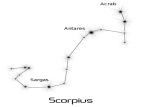| |
Record |
Links |
|
Author  |
Aberle, N; Witte, U |


|
| |
Title |
Deep-sea macrofauna exposed to a simulated sedimentation event in the abyssal NE Atlantic: in situ pulse-chase experiments using 13C-labelled phytodetritus |
Type |
Journal Article |
| |
Year |
2003 |
Publication |
Marine Ecology Progress Series |
Abbreviated Journal |
Mar Ecol Prog Ser |
|
| |
Volume |
251 |
Issue |
|
Pages |
37-47 |
|
| |
Keywords |
Deep-sea; Pulse-chase experiment; δ13C; Benthic carbon remineralisation; Macrofauna; Atlantic Ocean, Porcupine Abyssal Plain |
|
| |
Abstract |
Tracer experiments with 13C-labelled diatoms Thalassiosira rotula (Bacillariophycea, 98% 13C-labelled) were conducted at the Porcupine Abyssal Plain (PAP) in the NE Atlantic (BENGAL Station; 48?1?750'N, 16?1?730'W, 4850 m depth) during May/June 2000. In situ enrichment experiments were carried out using deep-sea benthic chamber landers: within the chambers a spring bloom was simulated and the fate of this food-pulse within the abyssal macrobenthic community was followed. In focus was the role of different macrofauna taxa and their vertical distribution within the sediment column in consuming and reworking the freshly deposited material. T. rotula is one of the most abundant pelagic diatoms in the NE Atlantic and therefore 0.2 g of freeze dried T. rotula, equivalent to 1 g algal C m-2 yr-1, was injected into each incubation chamber. Three different incubation times of 2.5, 8 and 23 d were chosen in order to follow the uptake of 13C-labelled phytodetritus by macrofauna. After only 2.5 d, 77% of all macrofauna organisms showed tracer uptake. After 23 d the highest degree of enrichment was measured and 95% of the individuals had taken up 13C from the introduced algal material. In addition to that a downward transport of organic matter was observed, even though the mixing was not very intense. The initial processing of carbon was dominated by polychaetes that made up a percentage of 52% of total macrofauna. In general macrofauna organisms that lived close to the sediment surface had higher access to the simulated food-pulse, confirming the hypothesis that individuals close to the sediment surface have the strongest impact on the decomposition of phytodetritus. In our study we observed only modest vertical entrainment of 13C tracers into the sediment. With regard to contradictory results from former 13C-enrichment experiments in bathyal regions, compared to results from our study site in the abyssal plain, we thus propose pronounced differences in feeding strategies between macrofauna communities from continental margins and abyssal plains. |
|
| |
Address |
Aberle, Witte: Max Planck Institute for Marine Microbiology, Celsiusstr. 1, 28359 Bremen, Germany; Aberle: Present address: Max Planck Institute for Limnology, August-Thienemann-Str. 2, 24306 Pl?n, Germany; Email: aberle@mpil-ploen.mpg.de |
|
| |
Corporate Author |
|
Thesis |
|
|
| |
Publisher |
Inter-Research |
Place of Publication |
Oldendorf/Luhe |
Editor |
|
|
| |
Language |
English |
Summary Language |
English |
Original Title |
|
|
| |
Series Editor |
|
Series Title |
|
Abbreviated Series Title |
|
|
| |
Series Volume |
|
Series Issue |
|
Edition |
|
|
| |
ISSN |
0171-8630 |
ISBN |
|
Medium |
|
|
| |
Area |
NE Atlantic |
Expedition |
|
Conference |
|
|
| |
Notes |
|
Approved |
no |
|
| |
Call Number |
refbase @ user @ 706 |
Serial |
4 |
|
| Permanent link to this record |

